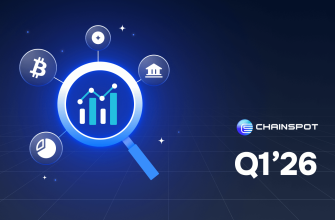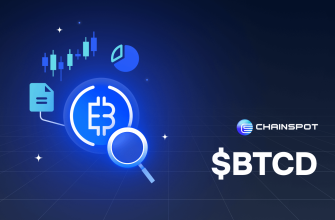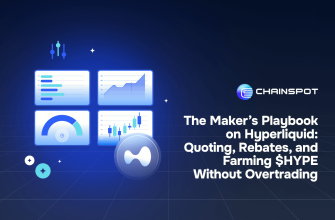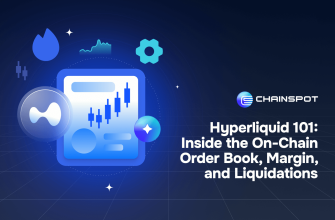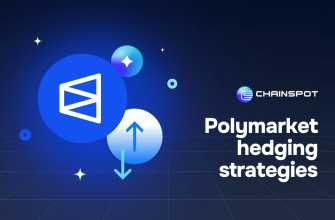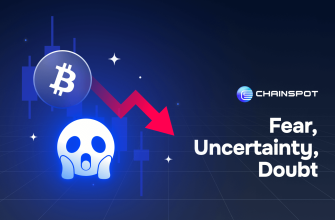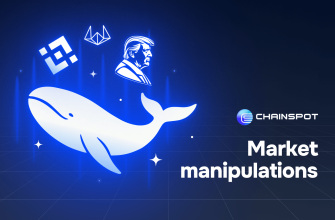- 1. Understanding Cross-Venue Structure: Why Prices Diverge at All
- 1.1. CEX vs Hyperliquid: Latency vs Purity
- 1.2. L2 DEXs: AMMs Make Everything Weird
- 2. Basis 101: The Core Model for Cross-Venue Arbitrage
- 2.1. Positive Basis (Perp > Spot)
- 2.2. Negative Basis (Perp < Spot)
- 2.3. Why Hyperliquid Basis Differs from CEX
- 3. Funding Rate Arbitrage: The Heart of the Strategy
- 3.1. Why CEX Funding Is Noisy
- 3.2. Why Hyperliquid Funding Is Cleaner
- 3.3. L2 DEX Funding: The Slow Vehicle
- 4. Tri-Venue Arbitrage: Hyperliquid vs CEX vs L2
- 4.1. Pair 1: Hyperliquid ↔ CEX
- 4.2. Pair 2: CEX ↔ L2 DEX
- 4.3. Pair 3: Hyperliquid ↔ L2 DEX
- 5. Execution Mechanics: How to Arbitrage Without Losing Edge
- 5.1. Execution on Hyperliquid
- 5.2. Execution on CEX
- 5.3. Execution on L2 DEXs
- 6. Hedging & Inventory: Staying Neutral Without Bleeding Fees
- 6.1. Always Stay Delta-Neutral
- 6.2. Hedge Buckets, Not Trades
- 6.3. Use Chainspot for Fast Rebalancing
- 7. The 2025 Arbitrage Environment: New Patterns Emerging
- 7.1. Hyperliquid as Fair Value Leader
- 7.2. Funding on Hyperliquid Sets the Tone
- 7.3. AMM DEXs Are the Weak Link
- 8. Full Arbitrage Playbooks
- 8.1. Playbook A: Funding Divergence Arbitrage
- 8.2. Playbook B: Basis Compression
- 8.3. Playbook C: AMM Lag Exploitation
- 8.4. Playbook D: Liquidation Wave Front-Running
- 9. Risk Management: Protecting Your Arbitrage Book
- 9.1. Funding Shocks
- 9.2. Inventory Blowouts
- 9.3. Cross-Chain Settlement Delays
- 9.4. AMM Depth Deception
- 10. Conclusion: Hyperliquid as the Center of Arbitrage Flow
- CALLS TO ACTION
- 👉 Trade on Hyperliquid (Arbitrage-Optimized Referral Link):
- 👉 Bridge & Rebalance Your Arbitrage Book Quickly:
The evolution of crypto derivatives trading has always been defined by one thing: fragmentation. Every exchange — centralized or decentralized — prices risk differently. Liquidity concentrates unevenly, funding rates diverge, basis spreads expand and compress, and execution quality varies wildly between venues. These differences are not just quirks of the market — they are alpha opportunities for traders who understand cross-venue structure and can arbitrage flows across ecosystems.
Hyperliquid, the fastest-growing on-chain derivatives exchange, sits in a unique position between CEX microstructure efficiency and DEX transparency. Its combination of deep liquidity, consistent funding markets, and predictable fair prices makes it an ideal venue for arbitrage—if you know how to compare the signals correctly.
This article breaks down the full mechanics of basis trading, funding arbitrage, and cross-venue price dislocations between Hyperliquid, major CEXs, and L2 DEXs. We’ll examine:
-
What drives basis spreads between venues
-
Why Hyperliquid often leads rather than lags
-
How to measure fair value across fragmented markets
-
Techniques for funding arbitrage that don’t overexpose your book
-
Execution traps in AMM-based L2s and how to avoid them
-
Inventory balancing using cross-chain tools like Chainspot
-
How professional arbitrageurs manage the cycle of price → funding → basis → liquidity
By the end, you’ll have a complete framework for cross-venue arbitrage in 2025 markets—built specifically around Hyperliquid’s strengths and microstructure.
1. Understanding Cross-Venue Structure: Why Prices Diverge at All
Before arbitraging a market, you must understand why it becomes arbitrageable.
Crypto markets are not unified. Prices diverge because:
-
Venues have different liquidity conditions
-
Funding mechanisms differ
-
Derivatives indices differ
-
Latency and execution differ
-
Risk tolerance of traders differs
-
Capital mobility between chains differs
-
Market-maker presence differs
-
AMM vs orderbook dynamics differ
These differences make price dislocations inevitable.
1.1. CEX vs Hyperliquid: Latency vs Purity
CEX advantages:
-
Ultra-low latency
-
Large directional flows
-
Deep retail participation
Hyperliquid advantages:
-
Fully transparent on-chain orderbook
-
Predictable maker/taker behaviour
-
Clean funding markets not distorted by wash volume
-
Lower toxic flow concentration
This leads to differences in:
-
reaction speed
-
spread width
-
depth distribution
-
index weighting
-
funding cycles
1.2. L2 DEXs: AMMs Make Everything Weird
L2 AMM-based perpetuals have structural quirks:
-
funding reacts slower
-
price impact is non-linear
-
oracle updates move in discrete jumps
-
liquidity is artificial and concentrated
-
depth is only as good as pool TVL
-
execution slippage is unavoidable
This creates persistent arbitrage windows—even when CEX and Hyperliquid are perfectly aligned.
2. Basis 101: The Core Model for Cross-Venue Arbitrage
The basis is the difference between:
Perp Price – Spot Index
Basis essentially measures:
-
sentiment
-
leveraged positioning
-
market imbalance
-
funding expectations
-
risk appetite
To make money, you want convergence.
2.1. Positive Basis (Perp > Spot)
Implication:
-
Longs are dominant
-
Funding tends to be positive
-
Futures are priced at a premium
Arbitrage:
-
Short the perp
-
Long the spot or hedge delta
-
Capture convergence
2.2. Negative Basis (Perp < Spot)
Implication:
-
Shorts are dominant
-
Funding tends to be negative
-
Futures trade at discount
Arbitrage:
-
Long the perp
-
Short the spot or correlated hedge
-
Capture compression
2.3. Why Hyperliquid Basis Differs from CEX
Reasons include:
-
more efficient maker competition
-
fewer liquidation cascades
-
less retail leverage
-
cleaner index design
-
slower panic selling
-
more disciplined funding cycles
This creates predictable patterns where Hyperliquid basis is:
-
more stable than CEX during volatility
-
more reactive than L2 DEXs
-
a better “fair value” benchmark
3. Funding Rate Arbitrage: The Heart of the Strategy
Funding is paid by:
-
longs → if perp > spot
-
shorts → if perp < spot
But here’s the trick:
Funding is not equal across venues.
Differences create pure arbitrage.
3.1. Why CEX Funding Is Noisy
CEX funding is distorted because:
-
makers internalize flow
-
exchanges manipulate interest rates
-
retail aggressively chases trends
-
volume is inflated by incentives
-
market makers widen spreads during volatility
This leads to:
-
wild funding swings
-
inefficient mean reversion
-
more noise than signal
3.2. Why Hyperliquid Funding Is Cleaner
Hyperliquid funding reflects:
-
real open interest
-
real risk positioning
-
true directional flow
It is less manipulated and less spiky.
This means:
Hyperliquid funding is a better baseline for arbitrage.
3.3. L2 DEX Funding: The Slow Vehicle
AMM-based funding often updates:
-
every hour
-
every 8 hours
-
with oracle lag
-
with pool TWAPs
-
with liquidity-sensitive adjustments
This creates predictable arbitrage windows.
4. Tri-Venue Arbitrage: Hyperliquid vs CEX vs L2
The core of the strategy: compare three venues at once.
4.1. Pair 1: Hyperliquid ↔ CEX
This is the most liquid arbitrage route.
Watch:
-
perp basis differences
-
funding spread
-
orderbook depth \desync
-
liquidation burst flows
Small spreads but frequent.
4.2. Pair 2: CEX ↔ L2 DEX
This is the most exploitable route.
Why?
L2s lag behind:
-
price
-
volume
-
volatility
-
funding
You’ll often see:
-
AMMs priced 20–50 bps off fair
-
funding stuck in wrong direction
-
slow convergence
-
block-time lag creating free money
4.3. Pair 3: Hyperliquid ↔ L2 DEX
This is the juicy one.
Hyperliquid obeys fair price, AMMs do not.
You can capture:
-
oracle lag
-
AMM mispricing
-
liquidity holes
-
volatility shock mis-calculation
Because Hyperliquid is more efficient, it often leads other venues.
5. Execution Mechanics: How to Arbitrage Without Losing Edge
5.1. Execution on Hyperliquid
Best environment for:
-
low slippage
-
fast fills
-
clean orderbook behaviour
-
neutral toxic flow
Best way to trade:
-
use limit orders
-
capture maker rebates
-
avoid chasing price
-
use shallow inventory
5.2. Execution on CEX
You must hedge aggressively but safely.
-
use fill-or-kill
-
avoid deep book crossing
-
use iceberg orders
-
avoid peak volatility spikes
5.3. Execution on L2 DEXs
The biggest trap in crypto trading today is:
Arbing AMMs without accounting for slippage.
Almost all AMMs have:
-
curvature
-
slippage
-
front-run risk
-
negative convexity
Use:
-
TWAP execution
-
small bite sizes
-
incremental hedges
-
volatility filtering
Never slam AMMs.
6. Hedging & Inventory: Staying Neutral Without Bleeding Fees
6.1. Always Stay Delta-Neutral
Cross-venue arbitrage only works if your net delta = 0.
If your book drifts:
-
you stop being arbitrageur
-
you start being gambler
6.2. Hedge Buckets, Not Trades
Do NOT hedge every fill.
Hedge in:
-
1% inventory buckets
-
or $50k notional buckets
-
or volatility-adjusted intervals
6.3. Use Chainspot for Fast Rebalancing
Cross-chain hedging becomes trivial using:
You can:
-
bridge stablecoins instantly
-
move collateral between chains
-
rebalance hedges faster
-
reduce exposure time
This is essential for L2 ↔ Hyperliquid arbitrage.
7. The 2025 Arbitrage Environment: New Patterns Emerging
Hyperliquid’s rise changed the ecology:
7.1. Hyperliquid as Fair Value Leader
CEXs react fast, but Hyperliquid holds the “clean price.”
L2s lag both.
7.2. Funding on Hyperliquid Sets the Tone
You can often predict CEX funding shifts 15–30 minutes earlier using Hyperliquid.
7.3. AMM DEXs Are the Weak Link
They are too slow and too rigid.
Arbitrage windows last longer.
8. Full Arbitrage Playbooks
8.1. Playbook A: Funding Divergence Arbitrage
Goal: capture funding spread.
Steps:
-
Compare Hyperliquid and CEX funding
-
Long on one, short on the other
-
Stay delta-neutral
-
Hold through funding windows
-
Unwind at convergence
8.2. Playbook B: Basis Compression
Goal: capture basis differences.
Steps:
-
Monitor perp–spot deviation
-
Note divergence between venues
-
Long low-basis venue
-
Short high-basis venue
-
Exit when basis compresses
8.3. Playbook C: AMM Lag Exploitation
Goal: punish oracle lag.
Steps:
-
Wait for volatility spike
-
Hyperliquid reprices instantly
-
L2 DEX stays stale
-
Arb deviation
-
Hedge on Hyperliquid
-
Close after oracle update
8.4. Playbook D: Liquidation Wave Front-Running
Goal: capture predictable liquidation flows.
Hyperliquid liquidation engine is cleaner, CEX is spikier.
Steps:
-
Spot liquidation clusters on CEX
-
Hyperliquid price leads
-
L2 price stays behind
-
Arb the spread safely
9. Risk Management: Protecting Your Arbitrage Book
9.1. Funding Shocks
Avoid:
-
CPI minutes
-
FOMC
-
ETF announcements
-
liquidation cascades
9.2. Inventory Blowouts
Set hard caps.
9.3. Cross-Chain Settlement Delays
Use fast bridging (Chainspot).
9.4. AMM Depth Deception
Pools look deeper than they are.
Always model slippage.
10. Conclusion: Hyperliquid as the Center of Arbitrage Flow
In the fragmented 2025 crypto landscape, Hyperliquid has become the structural “clean price” venue. Its:
-
transparent orderbook
-
consistent funding
-
predictable depth
-
low-latency execution
-
disciplined market-maker ecosystem
make it ideal for cross-venue arbitrage.
CEXs provide speed.
L2 DEXs provide inefficiency.
Hyperliquid provides balance.
With the right playbook, you can extract predictable yield by:
-
arbitraging basis
-
exploiting funding divergence
-
capturing oracle lag
-
hedging delta efficiently
-
running neutral inventory
-
mapping venues against one another
This is the new frontier of derivatives arbitrage.
CALLS TO ACTION
👉 Trade on Hyperliquid (Arbitrage-Optimized Referral Link):
https://app.hyperliquid.xyz/join/CHAINSPOT





